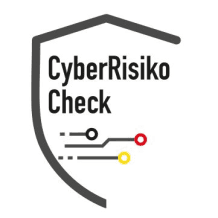What is Memory Forensics?
Memory Forensics is a critical procedure in digital forensics that focuses on analyzing the volatile memory (RAM) of a computer system. This type of analysis aims to identify suspicious activities or processes that may indicate malicious intentions or security breaches.
By examining the memory, forensic experts can extract information that is not stored on the hard drives of a system. This includes, for example, running processes, active network connections, cryptographic keys, and other sensitive data.
Why is Memory Forensics Important?
Memory Forensics plays a vital role in responding to security incidents. Since many malware attempts to evade detection by executing only in memory, analyzing this memory is often the only way to recognize and understand their activities.
This method can be especially helpful in situations where malware has concealed its traces on the hard drive or when physical access to a system is restricted.
Typical Applications of Memory Forensics
Malware Analysis
By examining the memory, security experts can recognize, isolate, and analyze patterns and behaviors of malware. This not only enables the identification of the malware but also the understanding of its functionalities.
Data Theft Detection
Attackers often use volatile methods to steal data that disappear after a system restart. Memory Forensics can capture these activities and trace the path of stolen data traffic.
Mitigation of Security Breaches
When investigating a networked system after an incident, Memory Forensics can help determine the exact source of the attack and the exploits used.
Procedures of Memory Forensics
There are various tools and techniques for conducting Memory Forensics.
Memory Imaging
The first step in Memory Forensics is creating an image of the volatile memory. Specialized tools such as Volatility or FTK Imager can be used to create an accurate image of the current state of the RAM.
Analysis of Memory Images
After creating the memory dump, the analysis follows. This includes searching for suspicious processes, detecting anomalies, and tracing the activities of potential attackers.
Reporting
The results of Memory Forensics are ultimately summarized in a report that accurately describes what was found, which processes were involved, and what potential risks exist.
Best Practices for Memory Forensics
Regular Training
As attackers' techniques continuously evolve, it is important for forensic experts to receive regular training to familiarize themselves with the latest research methods.
Use of Specialized Tools
The use of dedicated forensic tools is crucial for the accuracy and effectiveness of memory analysis. These tools should be regularly updated and checked to keep pace with the latest threats.
Collaboration with Other Security Audits
Memory Forensics should not be conducted in isolation. Integration into broader security analyses can help provide a more complete picture of the threat landscape.
Conclusion
In the world of digital security, Memory Forensics represents an indispensable discipline. With its help, invisible or obscured threats can be uncovered and neutralized by providing valuable insights into the behaviors and objectives of potential attackers. Regular analyses, combined with the right tools and techniques, ensure that systems are equipped against new and evolving threats.
📌 Related Terms: Digital Forensics, Network Forensics




